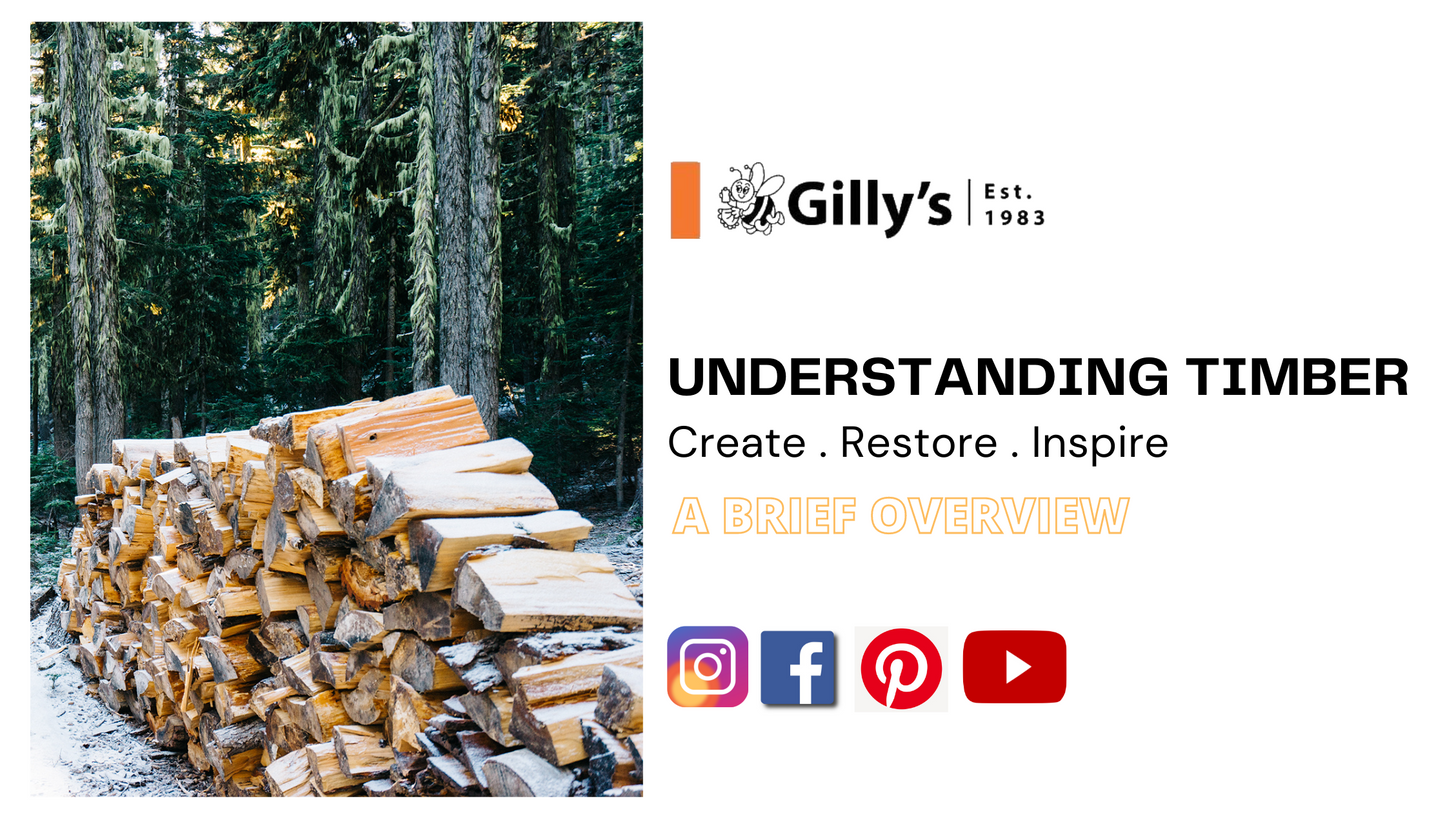
There are two types of naturally occurring wood: softwood and hardwood. Engineered wood comes in its own category as a third type of wood.
Softwoods

Softwood is the timber, which is milled from conifer trees. Scientifically known as gymnosperms, conifer trees are any trees which have needles and produce cones. Examples of popular softwood trees used in woodworking, construction, and furniture are pine, cedar, fir, spruce, and redwood.

Are Softwoods Softer Than Hardwoods?
Contrary to popular belief, softwoods are not named softwoods because they are “soft”. Whilst it is true that some varieties of hardwoods are very hard and therefore, more challenging to work with, the distinction between hardwood and softwood has little to do with the actual softness or whether one wood is harder to work with. There are many hardwoods which are softer than softwoods (an excellent example of this is balsa, which is used for craft because it is so light and easy to carve).
How Are Softwoods Used?
Most softwoods are strong and commonly used in many different building applications. Spruce, pine, and fir (SPF) are commonly sold as dimensional SPF timber at hardware stores. These woods are often used in as framing for new construction, as well as building utility-style structures.
Many of these woods, particularly softwoods from the cypress family are renowned for their ability to resist rot and insects. This makes trees such as cedar ideal for exterior projects, such as decking, cladding and outdoor furniture.
Hardwoods

Hardwoods come from any trees that do not produce needles or cones, known scientifically as angiosperms. These trees are most commonly known as deciduous trees (shedding their leaves in the winter months). They produce seeds that are covered, either with a skin or a shell.
Common hardwood species include oak, maple, cherry, mahogany, walnut and eucalyptus. Hardwood species are not always necessarily stronger than softwoods, but many species are well known for their beautiful and distinct wood grain patterns.

How Are Hardwoods Used?
Hardwood is considered the ultimate versatile material, with applications ranging from exquisite veneers and furniture, musical instruments, flooring, construction and boat-building.
The table below encapsulates the differences between hard and soft woods.
|
Characteristic |
Hardwood |
Softwood |
|
Originates from |
Deciduous trees |
Evergreen trees |
|
Examples |
Oak, teak, mahogany |
pine, spruce fir |
|
Price |
More expensive |
Less expensive |
|
Density |
Typically harder (but not always) |
Usually softer (but not always) |
|
Colour |
Generally dark |
Almost always light |
|
Structure |
Lower sap |
Higher sap |
|
Grain |
Close |
Loose |
|
Fire resistance |
Good |
Poor |
|
Weight |
Heavy |
Light |
There are also some woods which are considered to be hardwoods that are not deciduous trees, such as bamboo and palm. These plants are scientifically known as monocotyledons, but have many of the same characteristics of hardwoods and so are often classified as such. Bamboo and palm can sometimes fall under the next classification of engineered wood.
Engineered Wood: Manufactured Wood Products

The third type of wood you may encounter is engineered wood. Engineered wood does not occur naturally in the environment but is created through a manufacturing process.
These boards are generally made with wood, which is manipulated to have certain qualities or features. Also known as composite wood, these products are often made from the waste wood of sawmills.
Engineered wood is often treated through chemical or a heat process to produce a wood product which can meet certain sizes that would be difficult to achieve from nature.
Popular examples of engineered woods include plywood, oriented strand board (OSB), medium density fibreboard (MDF), and composite board. Wood veneers can also sometimes be classified as engineered wood, since it often needs to be manipulated either through specialized cutting techniques or joining pieces together to achieve a specific size or wood grain patterning.
Uses include cabinetry, flooring and marine construction.
With regards to using Gilly's products, you will likely find that the softwoods (since they have a looser, open grain) will 'drink' up more oil and/or wax than hardwoods. We recommend application of a sanding sealer in this case, to be applied prior to waxing or oiling. It helps to fill the grain, reducing the quantity of oil or wax you'll need to use.
